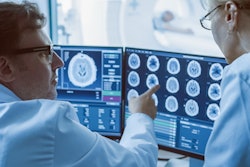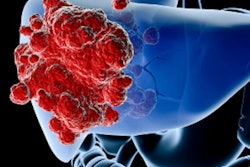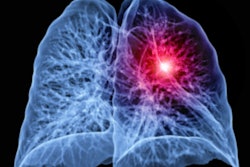
SAN DIEGO - While artificial intelligence (AI) has been generating buzz in radiology, a "killer app" for AI in medical imaging has yet to emerge. Dr. Eliot Siegel believes that killer app could be the use of AI for processing CT data, according to a talk at the 2019 International Society for Computed Tomography (ISCT) meeting.
Among all the imaging modalities, CT is most likely to benefit from the advances being made in artificial intelligence, noted Siegel, a professor and vice chair of diagnostic radiology at the University of Maryland School of Medicine.
"What's going to be the initial killer app for AI in diagnostic imaging?" he asked. "I'm absolutely convinced that for right now, in 2019, the killer app is using AI to enhance image acquisition and processing in CT."
AI hype
There has been a considerable amount of hype around AI in medicine, possibly even more than there was during the early days of the conversion from film-based to digital imaging, he said. Amidst this hype, radiologists have questioned whether they will be replaced by AI.
Experienced radiologists know the answer is "no," but medical students are less knowledgeable and as a result are more fearful of AI.
In a soon-to-be-published national survey, Siegel and colleagues found that 31% of medical students in the U.S. thought that AI would have a major impact on their practice. The students agreed that AI would, by far, affect radiology the most among all medical specialties.
The looming specter of AI made medical students much less enthusiastic about starting a career in radiology, and they reported that they were actively being discouraged from entering the field. In a free-form response, one of the students claimed to have been told by a mentor that radiology is like Blockbuster and AI is like Netflix.
"I think that poorly informed experts in their own fields don't understand that medical imaging is probably likely to be the hardest rather than the easiest of the medical or surgical specialties to be completely replaced by AI," Siegel said.
This disconnect stems from people not realizing the massive difference between the task of simply finding what's in an image versus the task that radiologists actually perform -- figuring out what's wrong or changed in an image and then determining its significance from a medical perspective, he noted. AI programs are really good at saying what's in a picture, but there's no AI program anywhere in the world that can touch what humans can determine regarding what's inherently wrong with a picture.
"That's why these predictions about the end of radiology are so incredibly misinformed," he said.
AI applications in CT
"There are thousands of different types of machine-learning techniques, and each one of these has hundreds of variants that have been around for many decades," Siegel said. "The cool thing that you need to know about machine learning is, for the first time, we can take data and turn it directly into an algorithm."
All major CT vendors are now looking at this capability of AI and seeing how they can improve image quality, particularly to preserve texture, in comparison with existing iterative reconstruction algorithms, he noted. Eventually, AI detection and diagnosis algorithms will merge with image display and visualization.
Siegel suggested that the widespread adoption by manufacturers of using AI for image acquisition and processing can produce immediate benefits, such as the following:
- Substantial improvements in image quality as well as reductions in scan times and dose in CT, MRI, and nuclear medicine exams
- Optimizing image quality without sacrificing texture and diminishing important diagnostic features
- Overcoming the computationally intensive limitations of model-based iterative reconstruction
Not only can AI generate synthetic images that replicate real images but also there are AI algorithms that can serve as counterpoints to existing algorithms, pushing them to produce images of ever-improving quality, he noted.
To illustrate this point, Siegel explained that there is an AI algorithm that can help generate counterfeit dollar bills and an opposing algorithm for detecting these fake bills. The counterfeit algorithm learns from the opposing algorithm until it can produce bills capable of bypassing the counterfeit detector.
The opposing algorithm then learns from these mistakes to improve its ability to detect counterfeits -- and so on and so forth. Applying this concept to CT, clinicians should be able to take a low-resolution or blurry image and turn it into a higher-resolution image using convolutional neural networks.
"Noise reduction, ultralow-dose scanning, artifact reduction, motion reduction -- all of those things are possible [with AI], and we're just starting with it, and I think it's going to revolutionize the way we do CT," he said.
In the year 2025
"I think in 2025 we're going to see a lot of really cool, broad applications that are more concentrated on disease processing like chronic obstructive pulmonary disease and multiple sclerosis, stroke, trauma-decision support, and hepatocellular carcinoma liver screening," he said.
There will, of course, be a need for training in how to use these algorithms and finding the best way to evaluate competing packages.
Furthermore, new medical, surgical, and oncological decision-support packages used by clinicians will include radiology parameters, which will require more structured quantitative analysis, he noted. In addition, ultralow-dose CT acquisitions will be presented to the radiologist as conventional x-rays are, but they will first be reviewed by AI.
One concern with these changes is that there might be a "skill atrophy" among future radiologists in the detection of lung nodules, stroke, and other diseases, just as there has been with plain-film reading. There will also be the challenge of dealing with the fact of knowing that a patient has an 85% chance of adenocarcinoma (based on AI analysis of microRNA assays from a liquid biopsy) but not knowing where that cancer is.
In closing his ISCT talk, Siegel mentioned other potential uses for AI in the near future, including the following:
- Assigning the probability of diseases and suggesting possible follow-up, with radiologists having ability to modify the report
- Quantitatively evaluating and analyzing changes from prior studies
- Combining multiple modalities for AI analysis
- Giving patients and consumers access to radiology analysis packages that are sold as apps around the world before they receive clearance from regulation agencies
"Humans have been around for about one minute and 17 seconds in the earth's 24-hour clock; computers have been around for closer to a millisecond," he said. "Who knows what's going to happen in the next microsecond or so."



















